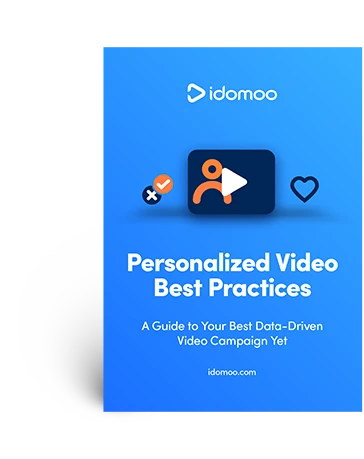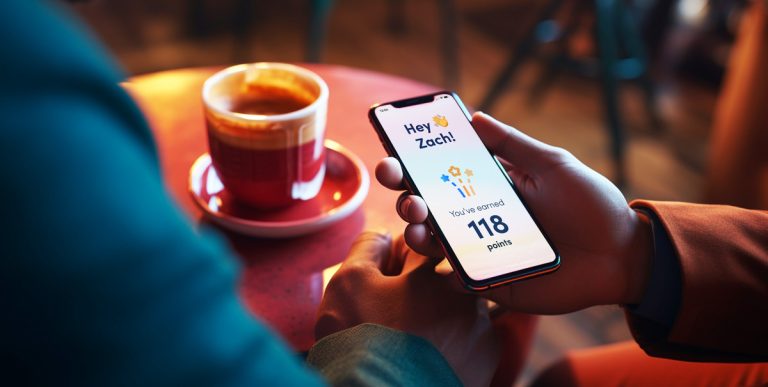Hyper-personalisation is changing retail. But how?
Picture this: You log into your favourite online grocery store, and it instantly knows what you need. It suggests recipes based on your diet and usual purchases, highlights sales on your favourite products and even recommends new items you’ll love. At checkout, your preferred delivery times and payment methods are already set. This, my friend, is hyper-personalisation in action in the retail sector.
Hyper-personalisation goes beyond traditional personalisation by using advanced data (and sometimes even artificial intelligence) to tailor every aspect of the shopping experience to individual preferences and behaviours. For marketers, this means tapping into detailed customer data to create highly relevant and engaging campaigns, which boosts loyalty and sales.
Let’s explore how hyper-personalisation is changing retail, the tech behind it and how you can implement it effectively.
Hyper-Personalisation: A Bird’s-Eye View
In the past, personalised marketing has been used as a way to target certain demographics using basic customer data (at the most). In real time, hyper-personalisation takes things a step further by adding a human touch.
Here are the key takeaways for hyper-personalisation:
- It’s an advanced way to create highly targeted content.
- Each customer gets their own unique experience.
- Using customer data (such as what you might find in your CRM), marketing teams are able to deliver personalised content that resonates.
- This is true for any type of content, from Personalised Video to GIFs, email preview text or product recommendations.
- Hyper-personalisation fits into marketing for any industry, and retail is just one of them.
Simply put, personalised retail experiences that meet highly specific customer preferences (and attract highly competitive customer attention) is more effective.
“A strong data strategy will distinguish industry leaders from followers.”
– Snowflake’s 2024 report on retail data
We couldn’t agree more.
How Retailers Enhance the Customer Experience with Personalisation
For retailers, personalised experiences go a long way in solidifying customer loyalty. At the top of the marketing funnel, personalisation is minimal because customer data is shallow.
Post on
But as the customer journey goes on, retailers gain access to information like purchase history, online and in-store visits, omnichannel touchpoints, shopping cart interests and much more. All of this fuels a hyper-personalisation strategy that delivers tailored experiences.
For example, retailers can create a personalised shopping experience by delivering:
- Individualised coupons generated from past purchases
- Recommendation engines that are as powerful as they are personal
- Customer-centric releases that enable product personalisation
- Multimedia email (including unique GIFs, Personalised Video and more) campaigns delivering 1:1 personalisation for the recipient alone
- Sale pricing and rewards experiences geared towards niche customer segments
- Segmented, data-driven social media campaigns
Retailers shouldn’t feel limited. This list is just a starting point of the endless possibilities of retail hyper-personalisation (stay tuned for real-world examples below).
Is AI a Must in Hyper-Personalisation?
So do you have to use AI to leverage hyper-personalisation? The short answer is no. AI isn’t required for hyper-personalisation in retail or other industries — but there’s a big caveat to that statement.
Considering how hyper-personalisation rests on an in-depth data strategy and a company’s ability to get deeply relevant content out to individual customers, it only makes sense that automating the data-gathering process and using AI to speed content creation is majorly helpful. Modern retail businesses would be remiss not to consider omnichannel marketing improvements using technology that can help companies do more, do it better and do it faster.
For example, our Enterprise AI Video creator trained on your brand can help you develop the video content you need on the fly. Prompts can be hyper-personalised, and the video can be integrated with your customer data so you can generate millions of AI videos, one for each individual.
Examples of Hyper-Personalisation in Ecommerce and More
Hyper-personalisation is easier to understand when you see it firsthand. Here are some examples of what pros in the retail industry (and some other brands) have conjured up.
1. A Personalised Year in Review
Automotive retailer AutoNation provided individualised, deeply Personalised Video to existing customers with data points about their own customer journeys. This gives customers a peek behind the curtains into the data the customer has about them, such as what car they bought, what car they sold (and whether it’s already been sold to someone else), service history and more.
While there’s no overt upselling going on in this video, there is a reminder for car owners to schedule their next service appointment. And the customer retention that comes from personalised touchpoints like this leads to long-term ROI.
2. Fixing Up Hyper-Personal Style
“So much of what ecommerce has been is search and scroll, and it’s inconvenient,” said Stitch Fix CEO Elizabeth Spaulding in an interview.
On the contrary, Spaulding’s company Stitch Fix prioritises personalisation in the retail space by making the app browsable based on the user’s personal style that has already infiltrated the feed.
Stitch Fix says they use generative AI to better understand customer feedback rooted in text — which is historically hard to sift through, but large language models are really good at organising it — and uplevel their outfit modeling capabilities.
3. Personalised Loyalty in the Customer’s Language
Ubisoft’s Assassin’s Creed has millions of players around the world, but every brand could do with a little more loyalty. That’s exactly what Assassin’s Creed did for its 15th anniversary with this personalised gaming video.
Note in this grid of personalised examples how the videos address individual usernames in their native tongue. Additionally, they shared player history, including hours played, number of games played in the series and even more nuanced content like number of skills achieved in the game. There’s even a chance to pre-order an upcoming game at the video’s end, showing how loyalty and upselling are often two sides of the same coin.
4. Bridging Ecommerce and Offline Marketing
Retail personalisation isn’t always easy given the sheer mass of campaigns brands must compete with. Eyeglasses retailer Warby Parker manages to cut through the noise by offering home try-on for up to five pairs of glasses at a time, enabling customers to find frames that suit their face in person.
While many eyeglass companies, including Warby Parker themselves, have upped the ante with high-quality virtual try-on, nothing beats real-world wear. Moreover, they’ve managed to maximise customer engagement by bridging ecommerce and offline marketing strategies (not to mention provide opportunity for user-generated video content with shopping haul and try-on videos).
Hyper-Personalisation for Retailers of All Sizes
In today’s competitive market, the level of personalisation can be a game-changer for retailers of all sizes
By leveraging data and technology, they can offer tailored experiences both online and offline. For instance, brick-and-mortar retailers can use purchase history and customer preferences to provide personalised recommendations in-store, creating a unique shopping experience that fosters loyalty and repeat business.
Hyper-personalisation also enables smaller retailers to achieve differentiation in a crowded market. By offering unique, customised experiences, they can stand out from larger competitors. This can be particularly effective in niche markets where personalised service is highly valued.
As Deloitte says in its latest retail trends rundown, “Retailers will increasingly blend digital and physical formats to appeal to consumers who prioritise quality, value, choice and convenience differently.”
This can put retailers who prioritise personalisation ahead even of businesses with larger marketing budgets, given their strong in-person shopping experiences.
Meanwhile, integrating digital tools with offline experiences can create a seamless shopping journey. Retailers small and large can use apps and loyalty programmes to gather data and offer personalised deals and recommendations. This enhances personalisation and encourages customers to engage more often. For example, a small bookstore might use a mobile app to suggest new releases based on a customer’s past purchases, enticing them to visit the store.
They can also leverage gamification as a way to learn more about their customers. First-party data is the best data source to personalise content for your customers as it’s the most reliable.
The Future of Retail With Hyper-Personalisation
As we look to the future of retail, it’s clear that hyper-personalisation will continue to play a crucial role in meeting evolving customer expectations. By leveraging advanced data collection methods, retailers can gain deeper insights into each customer’s unique preferences.
This enables them to tailor every aspect of the shopping experience, from personalised product recommendations on the homepage to targeted marketing campaigns that resonate with individual consumers.
The fact is incorporating personalisation into retail operations is essential for maintaining the high level of connection that customers now expect. As hyper-personalisation becomes the norm, retailers who embrace it will be better positioned to meet and exceed customer expectations.
Considering how competitive the retail industry is, it becomes even more important to maintain customer attention, something brands can achieve by prioritising video over other mediums. Idomoo’s Next Generation Video Platform transforms data into an engaging digital experience.
Curious how it all works? Let’s chat.






